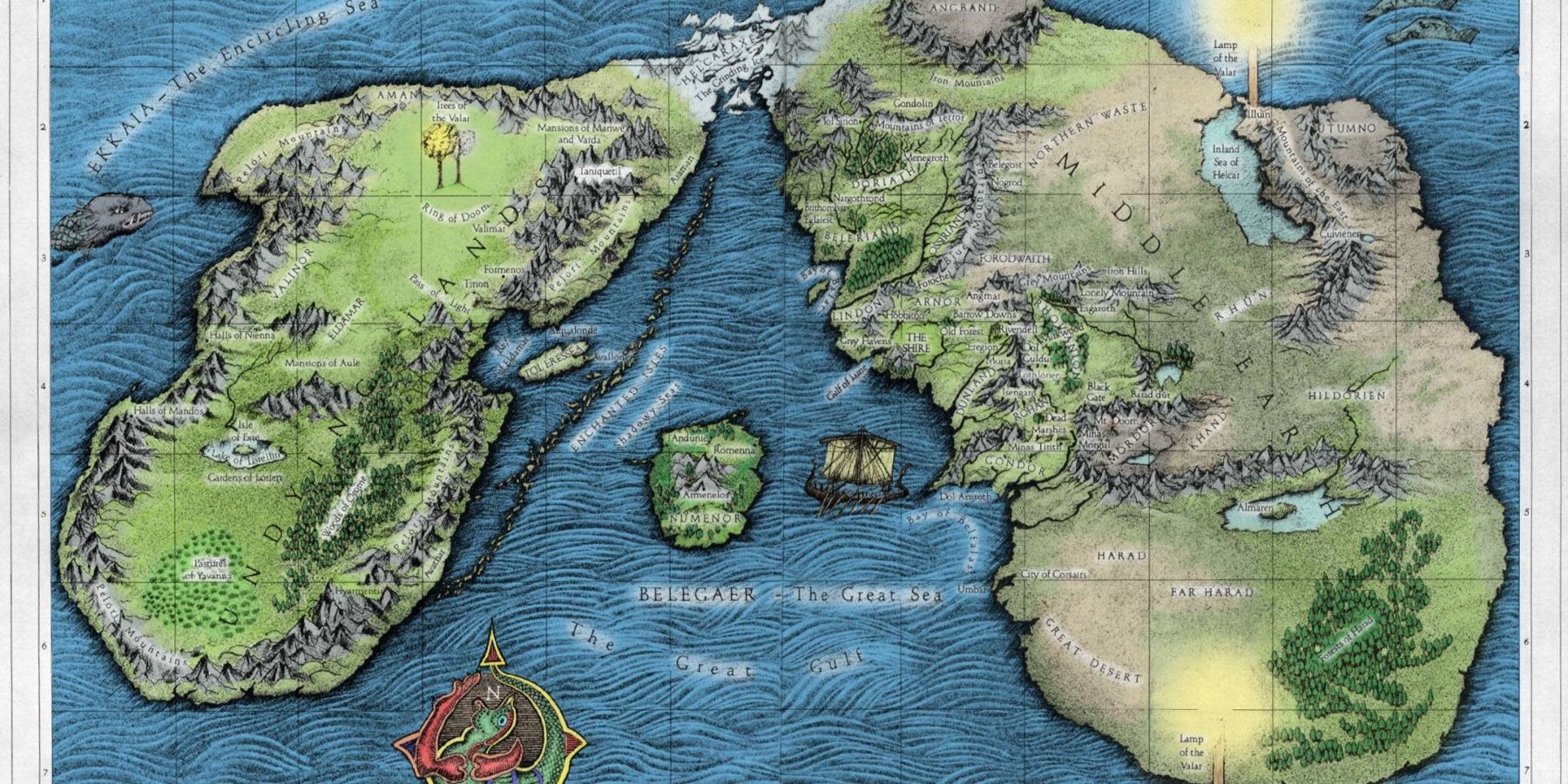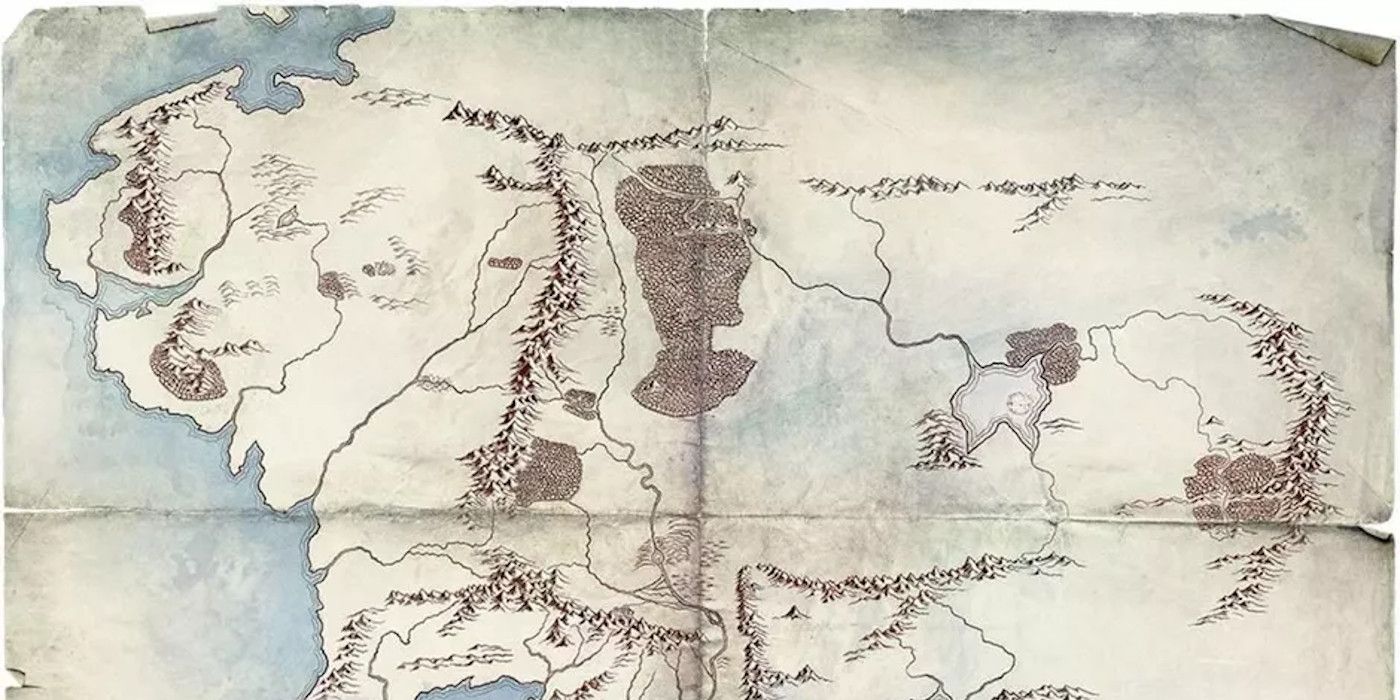There are many different creation myths around the world, in different religions, cultures and ancient civilizations. Nearly every world culture has a story of how an omniscient being or beings, the creator or creators of all life, brought the universe into being. Although incredibly varied, and personal to each people that puts their faith in them, lots of the legends about how the world came to be have certain components in common. Most include an all-powerful being who first envisions the world with pure intentions, an antagonist who seeks to somehow corrupt or destroy the unity of this vision, and some physical elements that are used to bring the world into reality. When creating fictional worlds and devising creation myths for these worlds, authors often employ a similar structure — and Tolkein's Lord of the Rings universe is no exception.
The Silmarillion is essentially Tolkien’s version of the creation myth for Middle Earth. Illuvatar serves the role of the original figure who has a beautiful concept of what he wants to create. Melkor, one of his Ainur, is the antagonist who seeks to destroy it before it has even begun. The physical elements used to bring the world into being are Fire, Earth, Air and Water. The Ainulindale, the first book in The Silmarillion, teaches readers how Illuvatar brought the Ainur, immortal godlike spirits, into being, and helped them sculpt Middle Earth out of these four elements. Of course, those elements first must be created themselves.
Inspiring The Ainur
When Illuvatar first awakens the Ainur, he fills them with wonder and curiosity. He shows them visions of the beautiful world he plans to create, and the creatures he plans to fill it with. The sight he gives them is of what will later become Middle Earth, and the elves and men who will live there:
The Ainur looked upon this habitation set within the vast spaces of the World, which the elves called Arda, the earth. And their hearts rejoiced in light, and their eyes, beholding many colors were filled with gladness, but because of the roaring of the sea they felt a great unquiet. And they observed the winds and the air, and the matters of which Arda was made, of iron and stone and silver and gold and many substances, but of all these, water they greatly praised.
Illuvatar invites them to love the world as much as he does, and to have a hand in creating it, by being responsible for the core materials that bring it into being: the elements. The Ainur recognize each of the elements that they must create, and are particularly fascinated by water. Perhaps this is linked to the essential nature of water for all life as we know it.
The Creation Of The Elements
As mentioned above, the four basic elements that make up the world according to many mythologies are Earth, Air, Fire and Water. These can be found within the lore of the Silmarillion as the fundamentals that were poured forth into the creation of Middle Earth. Each member of the Ainur was responsible for a particular element, which they sang into being using the gift of music that Illuvatar has blessed them with. Their songs held the power of creation, and each of them created different elements.
There are many Ainur beyond the core four, who brought various aspects of Middle Earth into being out of the four core elements. Yavanna, for example, brought forth green growth and trees and grew life; meanwhile, Varda brought starlight into the realm to guide its people in great times of darkness. But before those events could happen, the four first elements were created, each by a different Ainu:
Now to water had that Ainu whom the elves call Ulmo turned his thought, and of all most deeply was he instructed by Illuvatar in the ways of music. But of the airs and winds Manwe most had pondered, who is the most noble of the Ainur. Of the fabric of the earth had Aule thought.
Even Melkor, who would later turn, created one of the core elements of Middle Earth:
Melkor hath devised heats and fire without restraint, and hath not dried up thy desire nor utterly quelled the music of the sea.
Ulmo filled the vast oceans with water, Manwe blessed the skies with fresh winds, Aule ground the soil into the earth, and Melkor brought forward the flames that control so many of his beings, like the Balrogs. These four elements bring about a balance into the universe which allows life to thrive, and they work in harmony together to create the perfect world for Iluvatar’s children, the elves and men, to dwell in.
However, this becomes a problem when one of these elements defies the other, or disrupts that balance by trying to gain power and dominance over the others. That is why Melkor and his power of creation were so dangerous. He brought cruel things into being with no respect for the natural order of these things, and no regard for the way in which the elements must utilize each other equally in order to stop the world from crumbling. Melkor wanted nothing more than to destroy what the others were building, so great was his wrath and despise for Illuvatar and his imposed limitations to his Ainur’s power. Luckily, as is the case with most of Tolkien’s stories, good triumphs over evil, and Melkor is foiled before he can lay waste to the world that the others have worked so hard to build.



